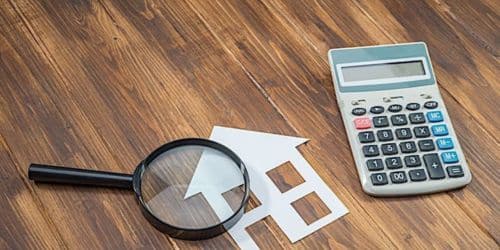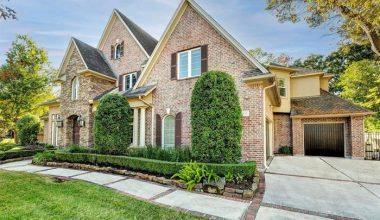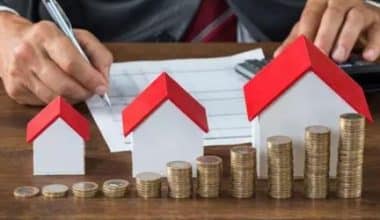The value of a building after implementing all repairs is known as the After Repair Value (ARV) in real estate. This is a very important sign for real estate owners because it tells them how much they can spend on a property before losing money and how much they can make after making repairs. When figuring out ARV, it’s important to consider both the local market and the cost of any repairs that need to be done. However, precise cost information is rare, and because the market is dynamic due to factors outside its control, the estimate you receive may be inaccurate. This article explains how to calculate Arv real estate using its formula, and how to find Arv real estate.
What Is ARV in Real Estate?
In real estate, the “after repair value” (ARV) is the price that a property is expected to sell for on the market after all repairs and changes have been made. It’s a crucial indicator for property investors since it predicts how much their investments will grow in value over time. This price is based on recent sales in the area, in addition to other criteria like location and convenience. You can also calculate potential investment returns on a property using ARV. Therefore, it is a crucial indicator to think about when assessing a property’s investment potential.
How Does ARV Work in Real Estate?
People often use the term “After Repair Value” or ARV in the world of house flipping. This refers to a real estate investment approach that involves purchasing a property, usually a distressed or “fixer-upper” one, making necessary repairs and renovations, and subsequently selling it for a profit. In the world of real estate investment, profitability is key. As such, savvy investors will often seek out properties that offer a healthy profit margin. This typically involves finding a property with a purchase price that is lower than both its estimated after-repair value (ARV) and the cost of necessary renovations. Thus, by doing so, investors can maximize their potential profits and ensure a successful investment.
The After value (ARV) holds significant importance for lenders, particularly private or hard money lenders, who extend ARV loans to buyers of distressed properties for renovation purposes. Typically, lenders establish the highest possible amount for an ARV loan by considering the property’s after-repair value, rather than its current value or the asking price. Next, the lender approves an appraiser to evaluate the After Repair Value (ARV) in order to establish the ultimate loan amount.
How to Calculate ARV Real Estate
When considering the acquisition of a “fixer-upper” property, it is essential to have a clear understanding of the property’s potential value post-renovation, prior to making any purchase decisions. This will ensure that you have a realistic idea of the return on investment that you can expect after completing all necessary renovations. One option for obtaining a comparative market analysis is to enlist the services of an appraiser. Alternatively, you may choose to conduct a rough calculation on your own. Fortunately, the process of calculating it is quite simple if you prefer to perform it on your own. Meanwhile, in order to get the result you desire, you should take the following steps:
#1. Conduct a Market Analysis
To begin the process, it is essential to obtain a precise evaluation of the property’s worth by analyzing it against similar properties located in the vicinity. One way to accomplish this task is to conduct an analysis of five to six comparable properties (also known as “comps”) located within the same vicinity.
Additionally, it is advisable that you browse through multiple listing services or consult with local real estate agents to determine recent property sale prices. When analyzing a property, you should consider nearby properties that are currently on the market or have sold within the last 90-120 days. This will provide valuable insight into the local real estate market and help you make informed decisions. Also, when searching for properties to invest in, prioritize those that possess similar features to the projected state of the property after undergoing repairs and renovations. This approach is more effective than solely focusing on properties that are in a similar state to their current condition.
#2. Compute the Price per Square Foot of Comparables
To determine the price per square foot of comparable properties, simply divide their sale price by their square footage. This will provide you with a useful metric for evaluating the value of similar properties. To obtain the average results, it is necessary to perform a comparison for each company, add up the results, and divide by the number of properties. Hence, by utilizing this method, you can obtain an approximate cost per square foot for similar properties within the vicinity.
#3. Use Price per Square Foot to Determine ARV
To calculate your property’s after value (ARV), multiply the average price per square foot of comparable properties by the square footage of your property. With an average price of $100 per square foot, a 1,500-square-foot home would have an ARV of $150,000. It is also vital to note that the supplied calculation is only an estimate. The real estate market is volatile, and a variety of factors such as local trends, assessed value, and other economic variables can have a substantial impact on property sales.
#4. Apply the ARV Formula
Calculating the After value (ARV) is a straightforward process that involves a basic formula. To calculate the ARV (After Repair Value) of your property, you need to multiply the average price per square foot of comparable properties by the square footage of your property. Assuming that the calculated average price per square foot is $150, the estimated after-repair value (ARV) of a property measuring 2000 square feet would be $300,000.
ARV Real Estate Formula
Most investors do not prefer to acquire a property that requires significant repairs or renovations at its current market value. The prospective buyer is interested in acquiring the property at a reduced price, considering the expenses required for repairs and renovations. The after repair value formula is what wholesalers and rehabbers usually use to figure out their deals. It goes like this:
70% of the after repair value – repair cost = maximum offer price
For instance, if the expected repair expenses for a property are $55,000 and its after-repair value is $250,000, the investor would use the following formula:
($250,000 x 70%) (ARV)- $ 55,000 (estimated repair cost)= $ 120,000 (maximum offer price)
Investors should not spend more than the maximum offer price for a property, thus they will typically make a smaller initial offer. A cheap purchasing price will generate more profit. Competitive markets may see certain rehabbers or wholesalers going as high as 75%-80% of ARV, although the 70% rule is widely accepted. This is despite the fact that their profit margins and risk will be lower as a result. Last but not least, it is crucial to the success of employing the ARV formula to have an accurate concept of expected repair expenses.
Limitations of Using ARV real estate
There exist certain limitations when utilizing this particular metric. It is important to note that the figures provided in the estimation process are subject to change due to a variety of factors. The primary inputs, namely the property value and repair costs, are often subject to inaccuracies and fluctuations over time. Furthermore, it is worth noting that while comps can provide valuable insights into a property’s post-repair valuation, estimating repair costs is a more subjective matter.
In addition, it is important to note that unforeseen expenses are not factored into the ARV calculation. Also, it is a well-known fact that older properties requiring extensive repairs may harbor concealed problems. It is possible that water damage may go unnoticed by the surveyor. It is possible that significant repairs may only come to light once the repair work has commenced, resulting in a substantial increase in the overall repair expenses. Market fluctuations are an inevitable occurrence. The prices of houses are subject to fluctuations that can occur on a yearly or even monthly basis. In the event of a market downturn, it is possible that you may need to retain ownership of the property for a longer period than initially intended, or alternatively, you may have to sell the property at a lower price point than originally projected.
Why Is ARV Real Estate Important?
Investment properties that are not in optimal condition may not be attractive to house flippers and investors who aim to generate profits. As a result, they may not be willing to purchase such properties at market value. Hence, by utilizing the ARV (After Repair Value) method, individuals have the opportunity to acquire a property at a reduced purchase price, taking into account the expenses of any necessary repairs that may arise in the future.
ARV has the potential to serve as collateral for a loan that covers the expenses of renovating and reselling a property, commonly referred to as “flipping.” Certain lenders offer renovation mortgages, also referred to as loans for home renovations. The maximum loan amount for such loans is typically around 75% of the ARV. Even those who do not engage in flipping can benefit from the use of ARV. When embarking on a home renovation project, it can be helpful to determine the After Repair Value (ARV) of your property. This calculation can provide insight into the potential increase in value that your renovations may yield for your home.
How Do ARV Loans Work?
The ARV loan is a mortgage option that enables borrowers to secure financing for a property purchase even if the property’s current value is less than the outstanding debts on it. To be eligible for an ARV loan, it is imperative for the borrower to possess a robust credit history and provide evidence of a steady income.
What Is ARV and LTV in Real Estate?
The initial cost of the property or home primarily determines the calculation of LTV (Loan-to-Value). What sets them apart is the disparity between the buying cost and the loan amount. A lender would extend a loan of $60,000 for a $100,000 home or property, assuming a loan-to-value (LTV) ratio of 60%. The After Repair Value (ARV) estimates the value of a property or home after completing all necessary repairs and renovations.
Do Hard Money Lenders Lend to ARV?
The After Repair Value (ARV) is an approximation of the market value of a property after it has undergone repairs and renovations. When seeking 100% financing from hard money lenders, it’s crucial to note that most of them have a maximum lending limit of 70% of the After Repair Value (ARV). Therefore, it’s imperative to locate a property deal that falls significantly below this threshold to guarantee full financing.
How Does a Loan Agency Make Money?
There are several avenues through which mortgage lenders can generate revenue. These include charging origination fees, earning yield spread premiums, collecting discount points, recouping closing costs, dealing in mortgage-backed securities (MBS), and providing loan servicing. Lenders have the potential to generate revenue from various closing costs, such as application fees, handling costs, underwriting fees, financing lock fees, and other related charges.
How Much Is My ARV Worth?
A more accurate estimate of the property’s ARV can be obtained by first calculating the average price per square foot of comparable properties (the total sales price divided by the total square footage of the property) and then multiplying that price by the total square footage of the property under consideration.
References
- rocketmortgage.com
- landlordstudio.com
- realestateu.com
- masterclass.com
We Also Recommend the Following
- COMMERCIAL LOAN RATES: Guide to Commercial Real Estate Loans
- REAL ESTATE ADS: 21+ Effective and Creative Examples of Real Estate Advertising Ideas for 2023
- TAX LOSS HARVESTING: Definition & All You Need to Know
- Best 2023 REAL ESTATE INVESTMENTS & What You Should Know!!!
- DEBT SERVICE COVERAGE RATIO: What It Is & How to Use It
- CAR BRANDS: The Best Car Brands In 2023






